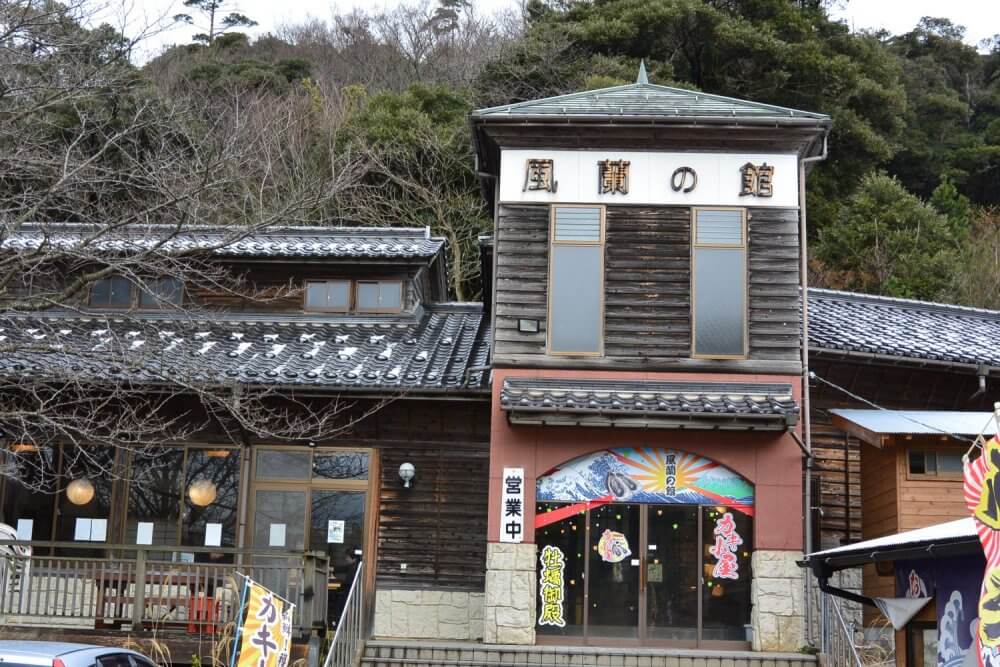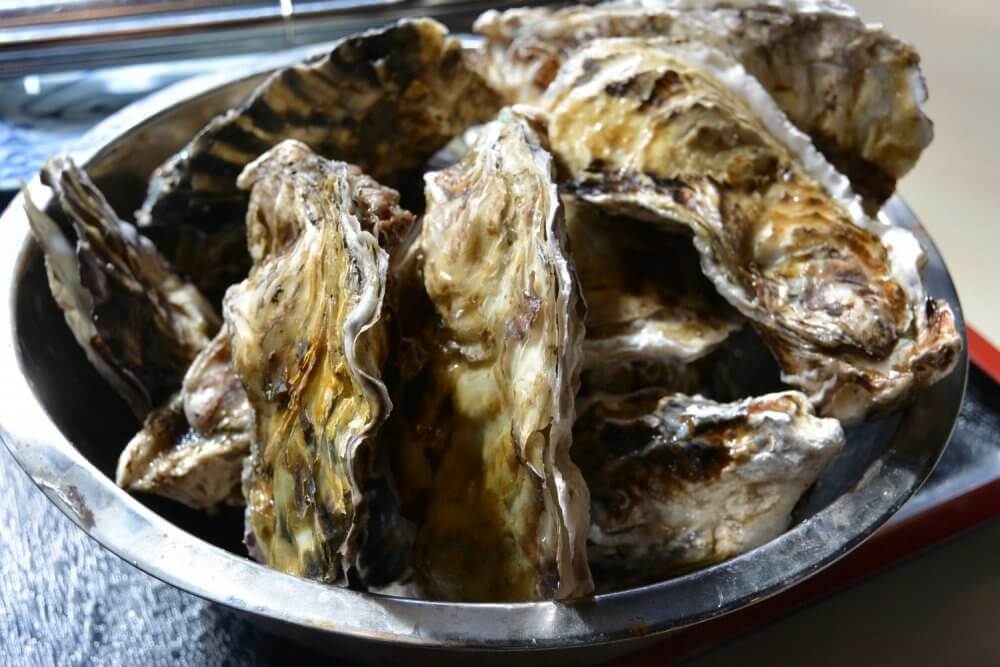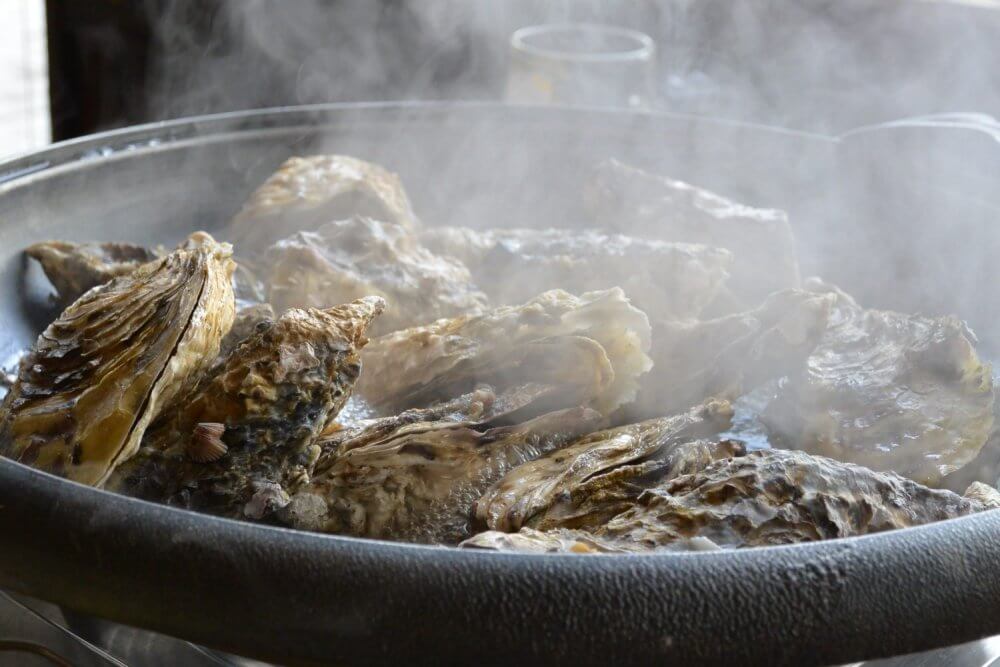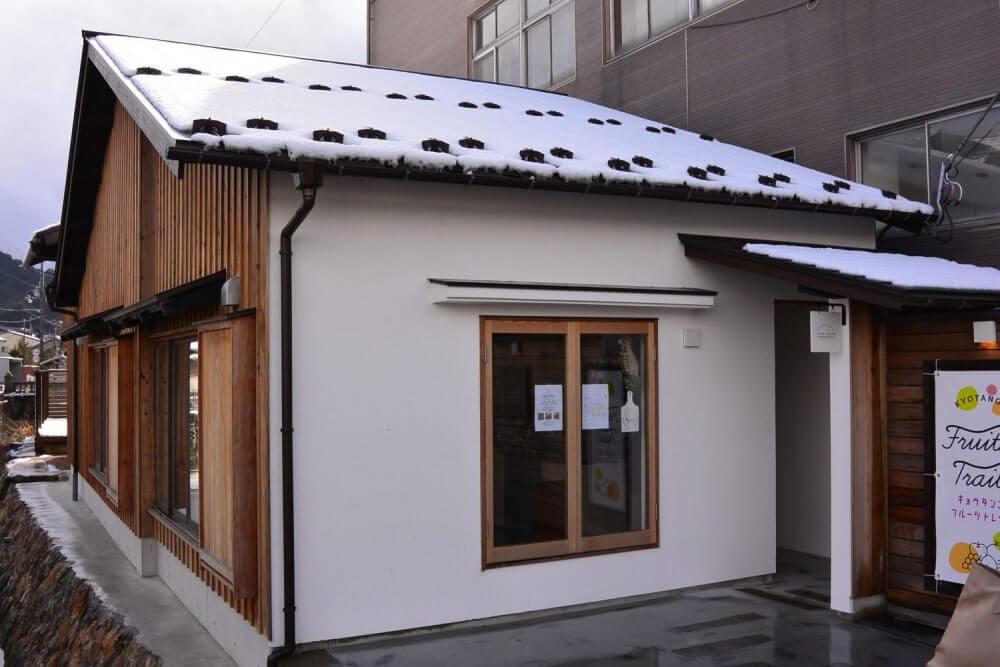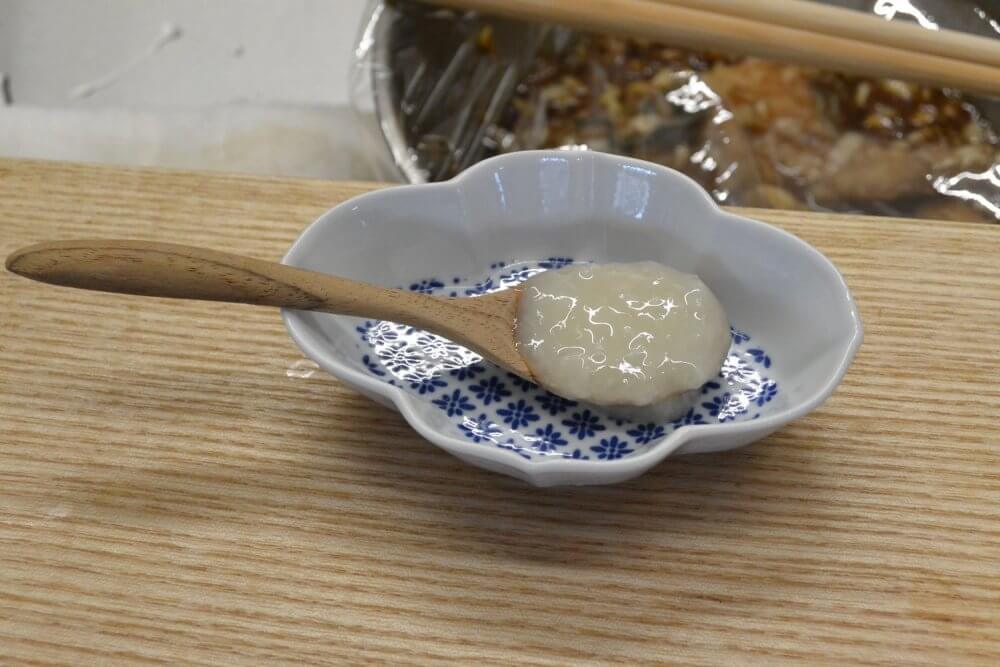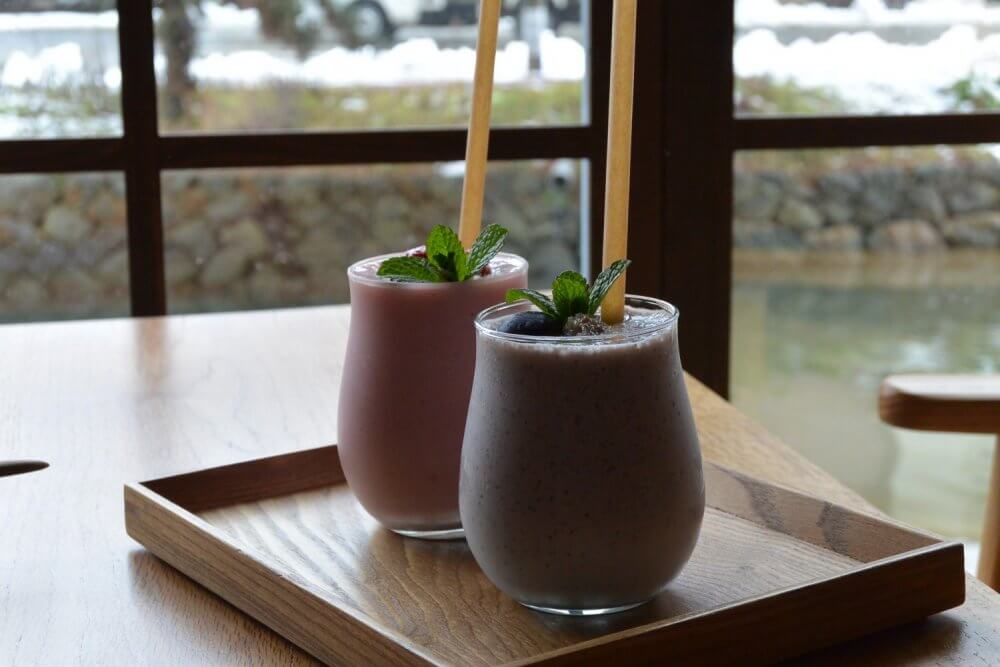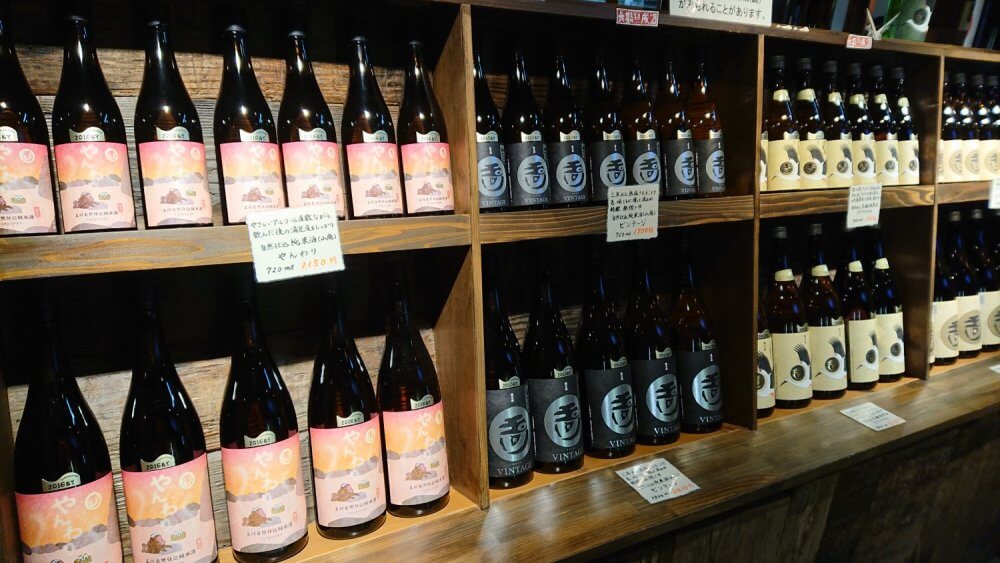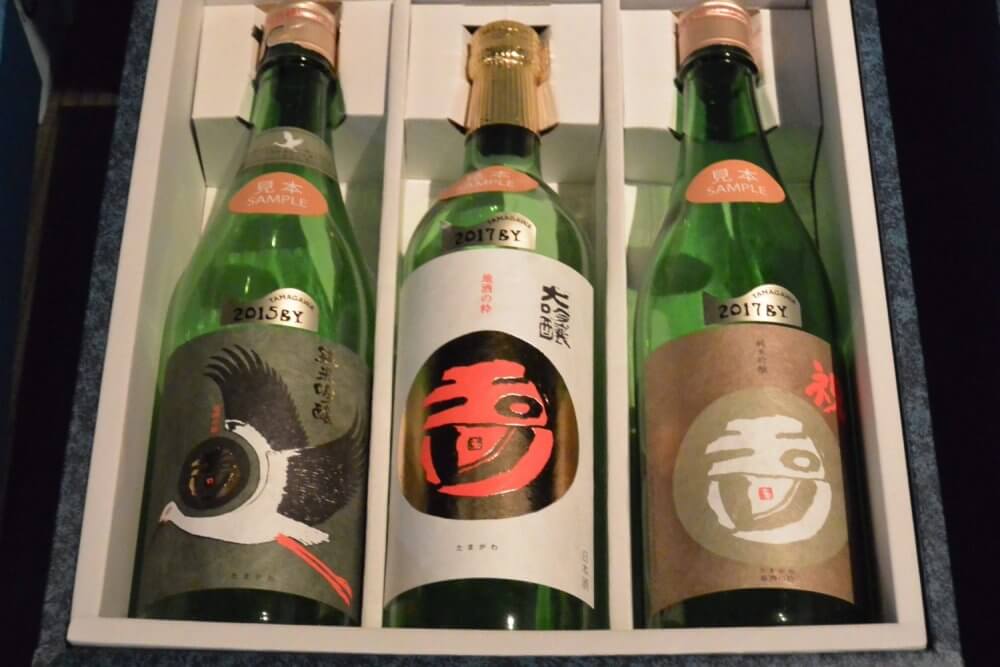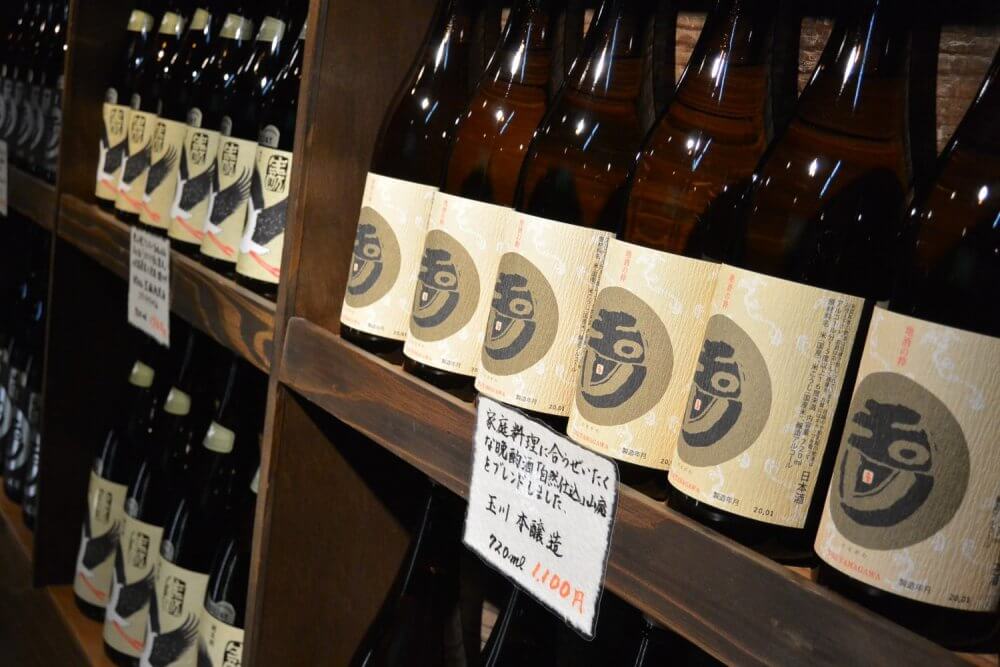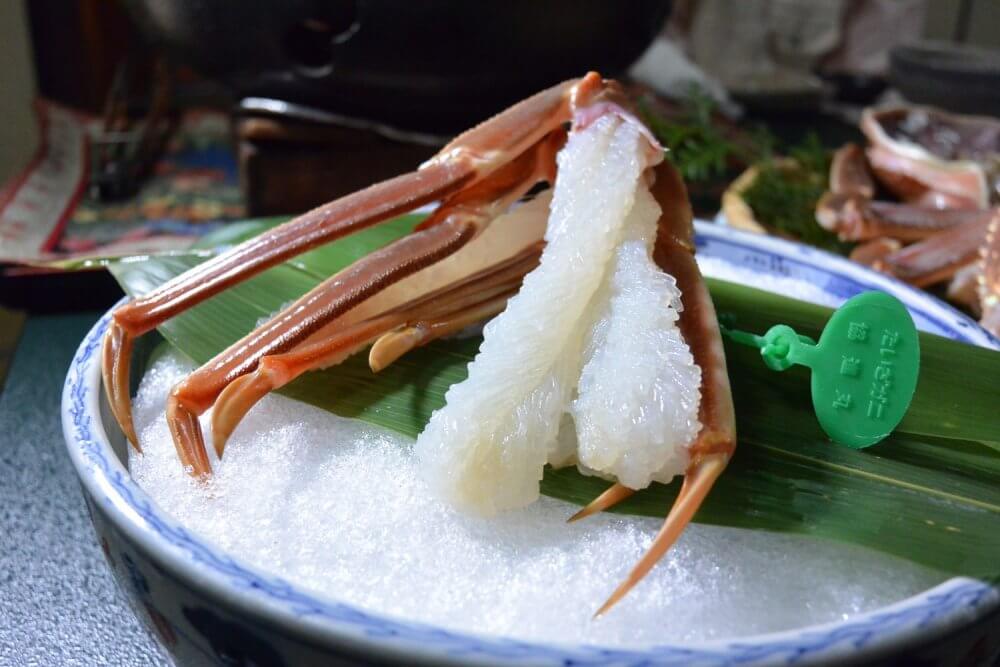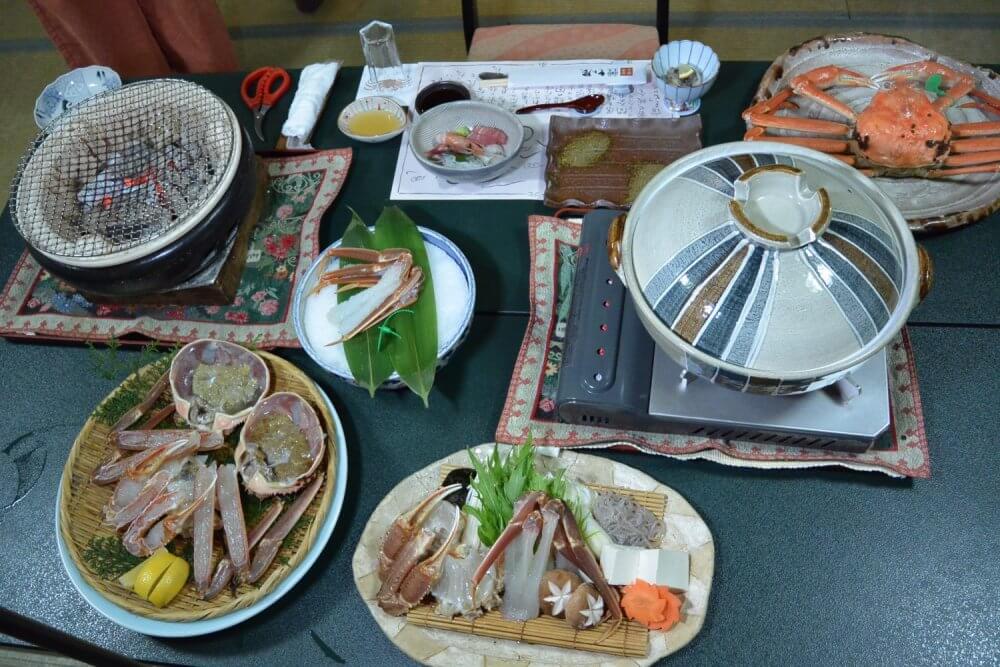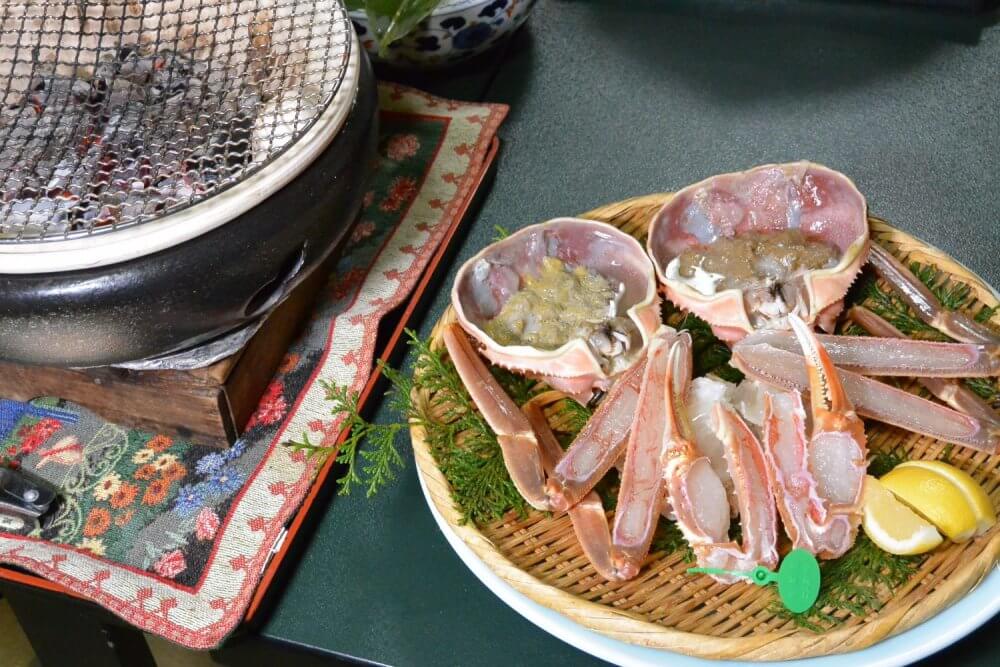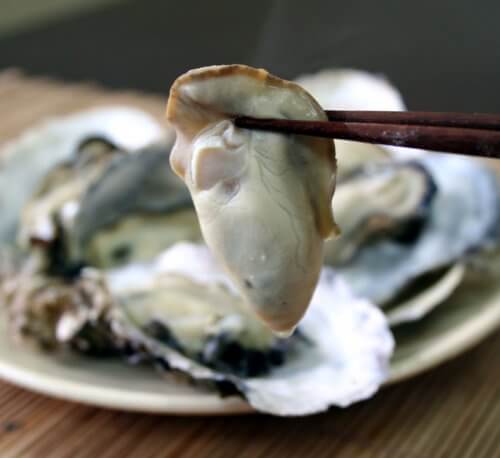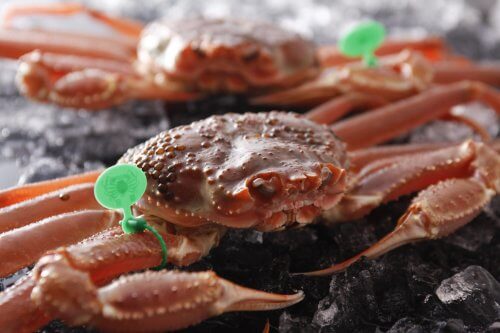Blog
Posted: March 3
Winter Food Tour Around Kyotango
Kyotango’s foods are very dependent on the season. If you visit twice at different times of year you will find very different foods in the shops and restaurants. On this winter food tour, we’ll taste some of the best that the sea has to offer, enjoy a tasty tipple and fortify our gut’s micro-biome.
Oysters at Kakigoya
Starting at lunch, we visit Kakigoya, a former school on the edge of Kumihama Bay. Kakigoya offers some very tasty oyster dishes. However the main draw is the all-you-can-eat oysters. These are steamed at the table, just set the timer and remember to turn the heat off when it beeps.
The Oysters are easy to shuck after steaming.
The oysters are easy to shuck after they have been steamed, just make sure you wear the glove provided when handling them. Even plain they taste great, but if you want to take them to the next level you can use one of several sauces. Ranging from classic lemon to soy sauce to ponzu (a citrus based vinegar).
The restaurant fills up pretty quickly, even on weekdays so make sure you get in early.
Smoothies and Miso Making
While it may be cold outside it’s just right for smoothies inside KOJI Marche, a recently opened cafe in Kumihama. KOJI Marche’s big attraction is the use of malted rice (called koji) in all it’s smoothies. Koji is very good for your gut’s micro-biome adding an extra boost of healthiness to the smoothies.
The koji helps strengthen the gut’s micro-biome.
But it’s not just smoothies at KOJI Marche they host workshops for making your own miso. All the ingredients will be ready for you, and you can take your creation home. Be sure you book ahead as miso workshops are not always available.
Kinoshita Sake Brewery
The next stop on our winter food tour is Kinoshita Sake Brewery. They produce a range of sakes, some best served warm, most best served chilled. Some varieties have even been aged for several years to produce a unique flavor.
The wooden shelves lend to the old world atmosphere
The shop has an old fashioned feel to it, from the “noren” (entrance curtain) to the use of wood in the interior. The wooden shelves are stacked full of different sakes. A major draw of this brewery is the “toji” (master brewer). Hailing from England, Mr. Philip Harper has injected a burst of ingenuity into the brewery while still retaining traditional methods and sensibilities.
At the bar they do tastings for customers as well. This makes a great introduction to proper sake. They also have sake flavored soft serve ice cream. It’s alcohol free so everyone can enjoy it, but they can put a shot of sake over it if you ask nicely.
Taiza Crab at Totoya
The final stop on our winter food tour is a feast of Taiza crab. Regulars to our site will recognize this as one of our biggest draws for domestic tourists. A full Taiza crab meal can be put on by Totoya in Taiza. Located next to Tateiwa you can enjoy a stroll before dinner to learn a bit about the geological activity which shaped the Kyotango coastline.
The crab is prepared for sashimi, hot pot and grilling.
The crab is butchered fresh and prepared in various ways. Some of the legs are made ready for Sashimi, to be eaten raw with a little dip of soy sauce and wasabi to taste. Some of the legs and claws are left partly in their shells, ready for the charcoal grill. The chest meat is split between the the Nabe (hot pot) and the grill. So is the crab “miso”, the dark meat, usually left in the upper shell to be cooked.
There was also Taiza crab, boiled whole, to be broken apart at the table. A very satisfying action that makes you feel like part of the preparation process. Crab has a reputation for being “fiddly” but Taiza Crab doesn’t have that problem. Because of the thickness of the legs and claws it makes it easy to get large satisfying chunks of meat out.
The meal also included accompanying vegetables and tofu to go in the nabe, a small plate of fish sashimi and obligatory rice, in case you had any room left.
With a table setting like this it’s easy to get swept away and try and eat lots of different things quickly. But if you take your time and savor each flavor you can appreciate the subtle nuance of the different ways of preparing Taiza Crab.
There’s more to do in Kyotango
This winter food tour only begins to scratch the surface of the food culture of Kyotango, let alone the other activities available. Make sure you keep tuned to this space and our facebook page for more exciting things to do in Kyotango.

